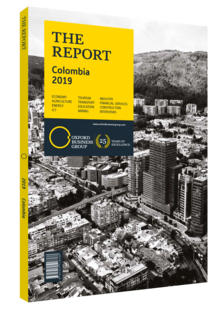Javier Díaz Fajardo, President, Bancóldex: Interview

Interview: Javier Díaz Fajardo
What is being done to support the growth of micro-, small and medium-sized enterprises?
JAVIER DÍAZ FAJARDO: It is important to distinguish between each segment, as businesses face different challenges depending on their size. For example, our strategy for micro-enterprises involves partnerships with more than 86 micro-finance institutions, many of which are not supervised by the Financial Superintendency of Colombia. The main challenge for this segment is coverage, as many micro-enterprises are located in remote areas, which are underserved by financial services. As a result, operating in the informal sector creates more risks for micro-finance institutions, which translates into higher rates for borrowers. Bancóldex has been working to maintain a competitive cost of credit, but more still needs to be done.
Meanwhile, small and medium-sized enterprises (SMEs), to a certain extent, are able to access credit at market rates from traditional financial institutions. Our policy in these cases is to work with commercial banks to increase the maturity of loans and support the allocation of credit at competitive prices. However, small enterprises often also need support to enable their business to grow or enter the global market. Together with ProColombia, the government entity responsible for promoting exports, international trade and travel, we have launched a series of programmes to assist small enterprises in their expansion.
While 70% of our assets are allocated through rediscount to third parties, including commercial banks and micro-finance institutions, we have recently started to grant loans directly through corporate finance products and corporate credit allocations. Our main objective is not to compete against traditional financial service providers, but instead to correct market failures by offering products to underserved segments.
The Colombia Stock Exchange has also launched a strategy to enable SMEs to issue debt, which will provide another means of financing. Moreover, the growth of financial technology will reduce costs and increase the accessibility of debt instruments.
In which ways are financial institutions working to boost equity investments in Colombia?
DÍAZ FAJARDO: Banks such as Bancóldex traditionally have not invested in equity. Learning from similar strategies in Mexico and South Korea, Colombia’s fund of funds programme was launched in April 2019 and aims to raise $100m in the short term, with an initial closing at $30m, with the participation of Bancó ldex, SoftBank and others. The initiative will support the growth of start-ups in the cultural and creative industries, known as the orange economy – a term coined by President Iván Duque. Instead of focusing on investment in private equity funds, there will be more growth in the medium term in venture capital (VC). A boost in VC activity will support not only the orange economy but also the entire start-up ecosystem.
How would you assess the performance of recent labelled bond issuances?
DÍAZ FAJARDO: Bancóldex has issued a total of COP1bn ($342,000) in social, green and orange bonds. These have been extremely well received, with on average three times as many subscribers as needed. Labelled bonds appeal to investors as they provide attractive yields and guarantee that investments have a positive social, environmental and economic impact. Nevertheless, their performance in the secondary market remains bound to the dynamics of the local capital market, which is characterised by a small number of institutional investors with buy-and-hold strategies. These operations have translated into a reduction in funding costs, enabling us to direct the savings towards providing more affordable credit to projects that have the largest impact on the economy. International interest for labelled bonds, particularly green bonds, also provide potential to raise capital abroad.
You have reached the limit of premium articles you can view for free.
Choose from the options below to purchase print or digital editions of our Reports. You can also purchase a website subscription giving you unlimited access to all of our Reports online for 12 months.
If you have already purchased this Report or have a website subscription, please login to continue.

